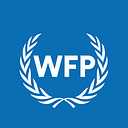The 2021 WFP Innovation Challenge: Sparking new ideas to revisit food systems
New systemic approaches and innovative solutions are needed to put us on track toward a world free from hunger. Therefore, this year’s World Food Programme (WFP) Innovation Challenge, announced in May, called for innovators to rethink the global food system. We saw a lot of excitement for the food systems challenge, with 502 eligible applications from 95 countries offering access to untapped potential to transform food systems.
By Gulia Rakhimova and Sanjna Sudan
The year 2020 challenged everything that enables food to travel from farms to our plates. Known as “food systems,” this network comprises all activities from farming and production to the processing and delivery of food. However, many of the world’s food systems are fragile and can collapse under shocks, like when 272 million people faced acute hunger first-hand due to disruptions caused by the COVID-19 pandemic.
WFP launches thematic innovation challenges regularly to source the most promising and daring solutions to address global hunger. Building on lessons learned from 2020, and in preparation for the UN Food Systems Summit 2021, this year we challenged innovators to submit game-changing ideas to make food systems more resilient, safe and nutritious, and inclusive.
In total 502 eligible applications were received — from startups, NGOs, academic institutions, and government agencies, located across 95 countries.
A key message emerging from this year’s Innovation Challenge is that there is enough knowledge and expertise regionally and globally to enact changes in food systems. Submissions came from all regions of the world; and more than half of all applications came from Sub-Saharan Africa (59.8 percent), followed by South Asia (11 percent), and Europe and Central Asia (9.2 percent). Emphasis on regional innovation is particularly exciting, because regional innovation communities and hubs are located where the needs are greatest, and complement the WFP Innovation Accelerator’s global activities.
Many applications received were from emerging markets and countries where WFP delivers food assistance, allowing us to foster and tap into local innovation ecosystems and know-how. The majority of applications came from innovators headquartered in Nigeria (11.3 percent), Kenya (9.1 percent), India (7.3 percent), and Tanzania (6.9 percent), all representing lower-middle-income economies. In fact, lower-middle-income countries comprised the largest group by country income level. This is an exciting trend with immense potential because evidence shows that social entrepreneurship and innovation can contribute to sustainable and inclusive job creation and overall local development (OECD, 2018b). Research also suggests that Innovations using local and regional know-how create meaningful livelihood impacts for their users. More significantly, the act of innovating contributes to building and strengthening a set of system capacities, which are essential for local economic development.
We know that even as women comprise half of the world’s population, in innovation and STEM fields (science, technology, engineering, and mathematics), less than 30 percent of women researchers worldwide are women, and an even smaller percentage (5 percent) is reportedly filled by women in positions of leadership.
As with the 2020 Innovation Challenge, we were impressed by the diversity and the quality of the projects that have been submitted. One-third of the applications came from innovation teams with female leads this year, and 44 percent of full-time employees in this year’s applicant teams are reportedly female. There is still room for much improvement and growth in gender balance, and the World Food Programme (WFP) Innovation Accelerator (whose team is 65 percent female) is working hard to make this shift happen.
Smallholder farmers are integral to regional food systems and are key to ending hunger and malnutrition worldwide. A significant number of entries (45.5 percent) this year focused on supporting smallholder farmers. However, smallholder farmers are increasingly facing barriers to profitability and experience socio-economic challenges themselves, rendering them among some of the communities most at risk of food insecurity. They are not a homogenous group as their needs and challenges are varied across different developing countries and therefore, addressing their concerns needs region focussed innovations. The applications we received focused on renewable agriculture, local mobile apps for farmers, improving global livestock traceability via blockchain, or promoting smallholder women farmer-led enterprises; all of which are critical to empowering farmers and strengthening regional and global food systems.
The most promising innovation teams will be invited to take part in WFP Innovation Bootcamps in 2021. If you missed the deadline for the WFP Innovation Challenge 2021, remember that anyone can apply at any time through our rolling call for applications, and will be considered for future innovation boot camps.
In 2020, innovations supported by WFP served more than 3.7 million people in 46 countries, enabling us to achieve more with less. For more inspiration, take a peek at WFP’s innovation portfolio in the WFP Innovation Accelerator’s 2020 Year In Review.
The WFP Innovation Accelerator sources, supports, and scales high-potential solutions to end hunger worldwide. We provide WFP staff, entrepreneurs, start-ups, companies, and non-governmental organizations with access to funding, mentorship, hands-on support, and WFP operations.
Find out more about us: http://innovation.wfp.org. Subscribe to our e-newsletter. Follow us on Twitter and LinkedIn and watch our videos on YouTube.
